Every day, Emma sat on the old wooden bench by the sea, her eyes fixed on the horizon, waiting for her husband, Daniel, to return. By her side, always, was her faithful dog, Max. Max had been with them for years, a loyal companion through every joy and hardship. After the storm Animals took Daniel, Emma’s grief was unbearable, but Max never left her side. He sat quietly beside her, offering comfort with his presence. As time passed, Max too grew old, but he remained by her, waiting with her. The dog’s love was a constant reminder that she was never truly alone.
Advertisement
1.The Silent Owl and the Empty Bench

Advertisement
Every evening, an old wooden bench sat quietly by the sea, its weathered surface reflecting years of memories. Emma, a widow, would sit there, waiting for her lost husband, Daniel, to return. As she gazed out at the horizon, a silent owl would perch nearby, watching over her. Its presence was a quiet reminder of the passage of time. As the seasons changed, Emma’s hope began to fade, but the owl remained, an ever-present guardian in the night. The empty bench became a symbol of her enduring love and sorrow, with the owl silently witnessing her solitude.
Advertisement
2.A Heartbroken Woman and Her Loyal Dog

Advertisement
Emma’s life changed forever the day the storm claimed her husband, Daniel. She was left with only memories and the loyal companionship of her dog, Max. Every day, Emma would sit on the old bench by the sea, staring at the waves, waiting for Daniel’s return. Max would lie beside her, his eyes never leaving her face, sensing her sadness. Through the quiet days and lonely nights, the dog never wavered in his devotion. He offered silent comfort, his presence a constant reminder that love, even in its deepest sorrow, is never truly alone. Max’s loyalty helped heal her heart.
Advertisement
3.The Lost Fisherman and the Return of the Birds

Advertisement
After the storm took Daniel, the fisherman, Emma waited by the pier, hoping for his return. The only company Emma had was the flock of seagulls that circled above her, as if watching over her grief. As the seasons passed, the birds continued to visit, their wings a silent reminder of Daniel’s love for the sea. One evening, as the sun set, the birds returned in greater numbers, and Emma felt a sense of peace. Though Daniel was gone, the birds symbolized his spirit, forever flying home to her.
Advertisement
4.The Butterfly’s Visit to the Empty Bench

Advertisement
Each day, Emma sat alone on the old bench by the sea, waiting for a husband who would never return. The storm had taken Daniel, and with him, a piece of her heart. One quiet afternoon, as she stared out at the waves, a butterfly fluttered gently onto the bench beside her. Its delicate wings, painted in vibrant colors, danced in the breeze. For a moment, Emma felt as if Daniel’s spirit had come to visit her, offering a quiet sign of hope. The butterfly’s brief visit reminded her that love, like nature, finds a way to endure.
Advertisement
5.The Dog that Waited with Her

Advertisement
In a quiet coastal town where the waves kissed the shore and the salt in the air carried whispers of the past, there lived a woman named Emma. Emma’s life had been full of love, but that love had been torn away by tragedy. Her husband, Daniel, a fisherman, had been lost at sea during a violent storm, and the grief that followed was overwhelming. Though Emma had loved many things in her life—the sound of the ocean, the scent of the flowers in her garden, and the warmth of Daniel’s embrace—nothing had ever filled the hole that Daniel’s absence left behind.
Advertisement
6.The Empty Bench by the Sea

Advertisement
Every morning, Emma would walk to the pier, the place where she and Daniel had often spent time together, watching the boats come and go. It was their spot, a place that held the memories of quiet moments, shared laughter, and deep conversations. Now, Emma sat there alone. Max would sit beside her, his tail tucked underneath him as he gazed out at the sea, his eyes alert and watchful, as if he too was waiting for something or someone to return.
Advertisement
7.A Dog’s Loyalty

Advertisement
Max had always been a loyal dog, but now, his loyalty took on a deeper meaning. Emma found herself talking to him as though he could understand her pain. She would tell Max about the things that were weighing on her heart, the things she couldn’t speak about to anyone else. Max never judged her, never interrupted. He simply listened. In his eyes, she saw nothing but love and acceptance. Max had always been there, but after Daniel’s passing, he had become Emma’s rock. He provided comfort without asking for anything in return. His unconditional loyalty was the only thing that kept her from slipping entirely into despair.
Advertisement
8.The Silent Companions Who Teach Us Unconditional Love

Advertisement
Throughout history, animals have played significant roles in the lives of humans, offering companionship, loyalty, and comfort in ways that words cannot fully express. Whether as pets, working animals, or simply as part of the natural world, animals have a unique ability to connect with humans on a deep emotional level. Their presence in our lives can bring both joy and solace, offering us lessons in love, patience, and understanding.
Advertisement
9.The Power of Unconditional Love

Advertisement
One of the most profound gifts that animals give us is their capacity for unconditional love. Unlike humans, who may harbor resentment, judgment, or conditions in relationships, animals love purely and without expectation. Whether it’s the wag of a dog’s tail when you return home or the gentle purring of a cat resting on your lap, animals provide an emotional connection that transcends words. Their affection is not contingent on anything other than the fact that you are there, and in their eyes, that is enough. In many ways, animals are our silent companions, offering us comfort without asking for anything in return. For example, a dog’s loyalty can be a life-changing experience for someone going through a tough time. The simple act of petting a dog or a cat can release oxytocin, a hormone associated with bonding and affection, allowing people to experience a sense of peace and calm.
Advertisement
10. The Role of Animals in Healing

Advertisement
From therapy dogs to emotional support animals, animals are increasingly being used to assist people with physical and emotional challenges. Their presence provides comfort, security, and companionship, which is especially important for individuals suffering from mental health issues like depression, PTSD, or anxiety disorders. In hospitals, nursing homes, and rehabilitation centers, animals are often brought in to provide a sense of joy and relief to patients who may be dealing with pain, loneliness, or fear. The unconditional love and attention of an animal can help to lift a person’s spirits and improve their emotional state. For many, the bond with an animal is a lifeline during difficult times, offering a sense of purpose and a reminder that they are loved and valued.
Advertisement
11. Lessons of Survival and Resilience

Advertisement
The lessons animals offer us extend beyond the domestic realm. Whether it’s the migratory patterns of birds, the persistence of wolves hunting in packs, or the quiet patience of a deer waiting for danger to pass, wild animals show us how to adapt, endure, and thrive. Many of these lessons are symbolic, and people often turn to animals as sources of inspiration. For example, the eagle is often seen as a symbol of strength and freedom, while the lion represents courage and leadership. Animals in nature teach us about the cycles of life and death, the importance of community, and the resilience needed to overcome challenges. Their instincts and behaviors remind us to be present, to value relationships, and to keep pushing forward, no matter how difficult life becomes.
Advertisement
12.A Connection Across Species

Advertisement
One of the most remarkable aspects of animals is their ability to connect with humans across species. It’s not just domestic pets that forge these connections; animals in the wild also demonstrate bonds with people. Stories of elephants showing empathy for humans, dolphins rescuing swimmers, or even birds following humans as companions are not uncommon. These interactions challenge the notion that only humans are capable of deep emotional connections, revealing that compassion, kindness, and care are qualities that transcend species. Our connection with animals isn’t always easy to explain. We often form bonds with animals that are profound and transformative. People share their lives with animals not because they need them for any practical reason, but because animals offer something intangible that enriches our existence. Whether it’s the calming presence of a pet or the admiration we feel for a wild creature, animals continue to inspire, teach, and challenge us to be better versions of ourselves.
Advertisement
13.The Responsibility We Have Toward Animals

Advertisement
As much as animals offer us, it’s essential to remember that we have a responsibility to care for them in return. From factory farming to the illegal wildlife trade, animals often face cruelty and exploitation. It is up to us as individuals and as a society to protect animals, respect their rights, and ensure their well-being. Ethical treatment of animals, conservation efforts, and the protection of natural habitats are vital if we are to preserve the bond between humans and animals. By advocating for animal rights and supporting organizations that work to protect wildlife and domestic animals alike, we contribute to a world where animals can thrive in harmony with humans.
Advertisement
14. How Animals Teach Us Unconditional Love

Advertisement
There is a unique and often indescribable connection between humans and animals. Throughout history, animals have been companions, guardians, workers, and sources of comfort for humans. But one of the most profound and often overlooked roles they play is teaching us the essence of unconditional love. Unlike human relationships that may be clouded with expectations, judgments, or conditions, animals offer a pure, unwavering love, untainted by any notion of reward or reciprocation. This unspoken bond of unconditional love can be found in both domestic pets and the animals that roam the wild, reminding us of a love that is both simple and profound.
Advertisement
15.The Power of a Pet’s Love

Advertisement
For many people, pets like dogs and cats are not just animals; they are family. From the first moment a pet enters a home, they offer a kind of love that is rare in human interactions. This is the love that comes with no strings attached—whether you’re having a good day or a bad one, your pet loves you the same. Dogs, in particular, have been known for their unwavering loyalty and affection. No matter how long you’re gone, a dog will greet you at the door with excitement and affection as if you had been away for years, even if you were just gone for an hour. Cats, though often more independent, can provide their own kind of love through their quiet presence, curling up beside their owners, or purring contentedly when they sense their human is in need of comfort. The emotional connection between a human and their pet goes beyond simply being in each other’s presence. Pets are often highly attuned to the emotional states of their owners. If you are feeling sad, anxious, or stressed, your pet seems to sense it and will often adjust their behavior to provide comfort. Dogs may sit by your side, offering their warmth and attention, while cats may nuzzle up to you, seeking to offer solace. This response is rooted in the unconditional nature of their love—they do not ask for anything in return, and their presence alone can offer immense comfort. The bond formed between a human and their pet is built on trust, care, and an understanding that transcends verbal communication.
Advertisement
16.Animals and the Healing Power of Unconditional Love

Advertisement
The therapeutic effect of animals on human well-being is well-documented. Studies show that spending time with animals, especially dogs, can reduce stress and anxiety, lower blood pressure, and improve overall emotional health. The unconditional love that pets offer can be a powerful tool in emotional healing. For those struggling with grief, depression, or loneliness, animals offer a steady, non-judgmental presence that can be profoundly comforting. Therapy animals, particularly dogs, are increasingly used in hospitals, nursing homes, and even disaster zones to help people cope with emotional trauma. The presence of a therapy animal can ease feelings of isolation, provide emotional support, and reduce the physiological effects of stress. These animals do not need to speak or understand human language; their mere presence is enough to remind people that they are not alone and that love can be expressed without words. This is one of the most beautiful aspects of the bond we share with animals—they provide healing in ways that transcend language and logic.
Advertisement
17.The Love of Animals in the Wild

Advertisement
While domestic animals, such as dogs, cats, and rabbits, are often the most visible examples of unconditional love, animals in the wild also show us how love can transcend all boundaries. Many wild animals, such as elephants, dolphins, and certain species of birds, exhibit complex social structures that involve acts of care, loyalty, and affection for their families and groups. Elephants, for instance, are known to have deep emotional bonds with each other. They grieve when a family member dies and often engage in rituals to honor the deceased. In the wild, elephants will protect the young, assist injured members of their herd, and support each other in moments of distress. Their behavior shows that love and loyalty are not limited to domesticated animals but can also exist in the wild, where the stakes are higher, and survival is often a matter of life and death. Similarly, dolphins are known for their tight-knit family units and cooperative hunting strategies. These highly intelligent animals communicate with each other through a complex system of clicks and whistles, and they have been observed displaying behaviors that suggest empathy and compassion. There are even reports of dolphins helping injured or sick companions to the surface for air, offering a kind of love that extends beyond survival instincts to one of deep caring for another’s well-being.
Advertisement
18.The Love Between Humans and Animals
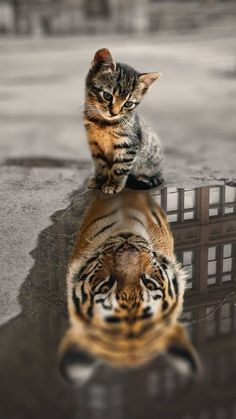
Advertisement
What sets the bond between humans and animals apart from other relationships is that animals often do not expect anything in return for their love and loyalty. Unlike human relationships, where love can sometimes be tied to what one can give or receive in return, animals love us because of who we are, not because of what we can offer them. Their love is selfless, free from judgment, and without the complexities of human expectations. This pure form of love offers a sense of comfort that is difficult to replicate in human relationships. This unconditional love teaches us valuable lessons in empathy, kindness, and forgiveness. When we see the way our pets love us, without concern for our flaws or mistakes, we are reminded of the power of acceptance and the importance of loving others without expecting anything in return. In a world where relationships can often feel transactional or conditional, the bond between humans and animals stands as a beautiful example of what it means to love without limits.
Advertisement
19.The Unspoken Bond

Advertisement
One of the most remarkable aspects of the bond between humans and animals is that it often doesn’t require words. Animals communicate with us through their actions, their presence, and their instincts. They know when we are sad, when we are happy, when we need a friend, and when we need comfort. Whether it’s a dog snuggling up next to us after a tough day, or a cat curling up in our lap to offer warmth, animals communicate their love and care in ways that we don’t always need to interpret—they simply show up when we need them most. This unspoken bond transcends language and culture. It is a universal truth that animals, regardless of species, have a unique ability to touch our hearts and teach us about love in its purest form. Through their actions, they remind us that love doesn’t need to be expressed through grand gestures or words; sometimes, the simplest acts of companionship are the most meaningful.
Advertisement
20. A Symbol of Sustenance, Culture, and Reverence

Advertisement
Cows have been a cornerstone of human society for thousands of years, offering not just sustenance in the form of milk and meat, but also symbolizing various aspects of culture, religion, and economic life. These majestic animals, often viewed as symbols of peace and fertility, play vital roles in agriculture, provide essential products for daily life, and are respected and revered in many societies around the world. The cow’s role in human civilization is a tale of symbiosis, providing humans with food, labor, and companionship, all while shaping our traditions and beliefs.
Advertisement
21.The Role of Cows in Agriculture and the Economy

Advertisement
Cows have long been central to the agricultural economy, especially in rural and farming communities. Their primary contribution has been as a source of milk, which is turned into dairy products such as cheese, butter, and yogurt. Milk is a staple in many diets around the world, and cows are the main providers of this essential food. In addition to milk, cows are also raised for their meat, which is a key protein source in many countries. Beyond providing food, cows also play an essential role in agriculture as draft animals. In many parts of the world, oxen—castrated male cows—are used as draft animals for plowing fields, pulling carts, and transporting goods. Their strength and endurance make them ideal animals for this work, especially in regions where modern farming equipment is not available. The cow’s contribution to agriculture, both as a provider of food and as a working animal, has helped shape civilizations and develop economies over centuries.
Advertisement
22.Cows and Their Contribution to the Environment

Advertisement
While cows have often been associated with human sustenance, they also have a significant impact on the environment. Cattle farming, particularly in large-scale operations, has been a major contributor to deforestation, especially in tropical regions where land is cleared to create pasture. Cows, being ruminants, also produce methane, a potent greenhouse gas, which contributes to global warming. As a result, discussions around the environmental impact of cattle farming are becoming more common, with calls for more sustainable farming practices that reduce emissions and deforestation. However, cows also have positive environmental contributions. For example, in many traditional farming systems, cows help maintain biodiversity. Their grazing can prevent the overgrowth of certain plants, which can lead to the development of more diverse plant life in pastures. Additionally, their manure is used as a natural fertilizer, enriching the soil and reducing the need for chemical fertilizers. In some regions, cow dung is used as fuel for cooking, providing a sustainable energy source for communities. Therefore, while the environmental impact of cattle farming is complex, the relationship between cows and the land is not purely negative.
Advertisement
23.Cows in Culture and Religion
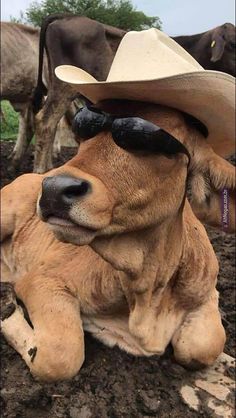
Advertisement
The cow holds a special place in various cultures and religions, symbolizing everything from prosperity to peace. In Hinduism, cows are revered as sacred animals and are associated with the goddess Kamadhenu, the divine bovine-goddess of plenty. Cows in Hindu culture are symbols of non-violence and are treated with great respect. In India, the killing of cows is illegal in many states, and they are often seen roaming freely in rural and urban areas alike. The cow’s role in Hinduism highlights the reverence with which these animals are treated and their symbolic connection to the divine. In other cultures, cows are symbols of fertility and prosperity. In Africa, cows have long been a status symbol and are often used in rituals and ceremonies. In many African cultures, cows represent wealth and are exchanged as part of marriage contracts and tribal rites. The cow is also featured in numerous myths and legends, often symbolizing sustenance, nurturing, and abundance. In Western cultures, particularly in agricultural societies, cows have historically been associated with hard work, resilience, and the rural way of life. They are often depicted in art and literature as symbols of the pastoral ideal, representing peace, simplicity, and connection to the land. In countries like the United States, cows are central to the dairy and beef industries, and images of cows are ubiquitous in marketing and advertising.
Advertisement
24.Cows as Sentient Beings
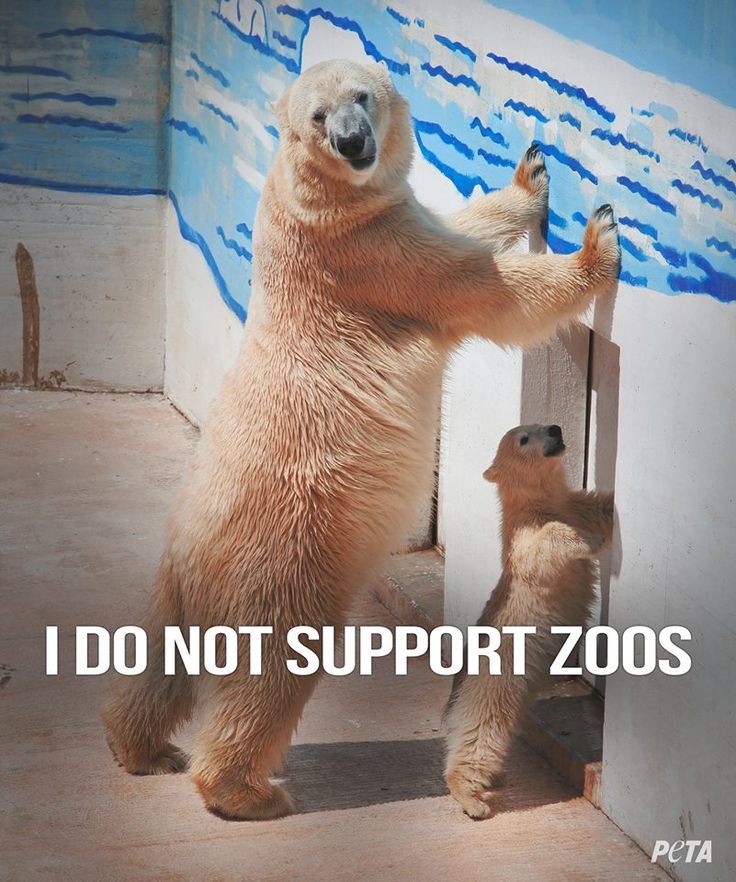
Advertisement
While cows are often viewed primarily as sources of food or labor, it is important to recognize that they are sentient beings with complex emotional and social lives. Scientific research has shown that cows are intelligent and capable of forming strong social bonds with other cows. They can recognize individual faces, both human and bovine, and they have been observed to communicate with each other through vocalizations and body language. Cows are also capable of experiencing a wide range of emotions, from joy and contentment to fear and distress. Cows, like many other animals, also have a sense of self-preservation and seek out comfort and safety when they are in danger. In fact, research has shown that cows experience stress and anxiety in response to loud noises, overcrowding, and other stressful conditions often present in factory farming. As a result, there has been growing interest in improving the welfare of cows, ensuring that they are treated humanely and with respect, both in farming operations and in the general public’s
Advertisement
25.Ethical Considerations and the Future of Cow Farming

Advertisement
With the growing awareness of animal rights and the environmental impacts of large-scale farming, there is an increasing push for more ethical and sustainable practices in cow farming. Many farmers are adopting practices that prioritize the well-being of their animals, including providing them with more space, better living conditions, and access to pasture. Additionally, there is a rise in the demand for plant-based alternatives to dairy and meat products, which has prompted a reevaluation of the traditional role of cows in agriculture. While the debate around cow farming and consumption continues, there is no doubt that cows will remain a central part of human culture, society, and the global economy. The future of cow farming may be shaped by new technologies, sustainable farming practices, and a greater understanding of the ethical treatment of animals. However, it is clear that cows will continue to be valued not only for their practical contributions but also for the symbolic and emotional connections they create with people across the world.
Advertisement
26.A Journey Through History, Culture, and Companionship
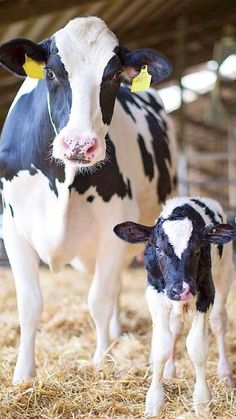
Advertisement
Cats, with their mysterious charm and independent nature, have captured the hearts and imaginations of humans for thousands of years. From ancient civilizations to modern homes, cats have played diverse roles in human society, from revered deities and symbols of mystery to beloved companions and family members. The domestic cat, in all its forms, embodies a fascinating blend of beauty, grace, and individuality that makes them unique among animals. This article explores the history of cats, their cultural significance, their roles as companions, and the deep bond they share with humans.
Advertisement
27. From Revered Deities to Domestic Companions

Advertisement
The history of cats stretches back more than 4,000 years to the ancient civilizations of Egypt. Bastet was depicted as a lioness or as a woman with the head of a cat, symbolizing the graceful yet powerful qualities that Egyptians saw in these animals. Cats were so revered that they were often kept as pets by Egyptian nobility, and killing a cat, even accidentally, could result in severe punishment. Cats’ connection to Egyptian society extended beyond their sacred status. They played a crucial role in protecting grain stores from rodents, making them invaluable to farmers. Their hunting prowess made them essential in maintaining the food supply, which only increased their status. It was during this period that cats began their long association with human habitation, moving from the wild to the home. As cats spread to other parts of the world, they were not always seen as divine creatures. In medieval Europe, for instance, cats were sometimes associated with witchcraft and superstition, especially black cats. They were believed to have magical powers, and many were feared, leading to widespread persecution. Despite this, cats remained valuable as hunters, keeping mice and rats in check, especially in households and aboard ships. Over time, cats began to be viewed more favorably, reclaiming their status as beloved companions.
Advertisement
28.Cats in Modern Society: The Ideal Companion

Advertisement
Today, cats are one of the most popular pets worldwide, with millions of households welcoming them as part of the family. Unlike dogs, which are often associated with loyalty and protection, cats are known for their independence and self-sufficiency. They are creatures of comfort and can entertain themselves for hours, making them ideal pets for individuals and families with busy schedules. Though they are often thought of as aloof or solitary animals, cats can be affectionate and loyal in their own way. They express their love through purring, head-butting, and curling up next to their humans. Many cat owners can attest to the soothing comfort of a cat’s purr, which has been scientifically shown to reduce stress and anxiety. Their calm, nonchalant demeanor can bring peace and tranquility to a home, making them ideal companions for those seeking emotional comfort. The bond between humans and cats is also seen in their role as emotional support animals. Cats have been shown to help alleviate symptoms of depression, anxiety, and PTSD. Their calming presence, along with their ability to sense their owners’ emotional states, allows them to offer comfort during difficult times. For many, a cat’s gentle purring or their comforting presence during stressful moments is enough to lift the spirits.
Advertisement
29.The Independent Nature of Cats

Advertisement
One of the most distinguishing features of cats is their independent nature. Unlike dogs, which rely on humans for direction and social interaction, cats are more self-reliant. While they enjoy companionship, they can also be content with solitude. This independence is part of what makes cats such fascinating animals. They are hunters by nature, and this instinct remains strong even in domesticated cats. Many cats will hunt small prey, such as mice, birds, or insects, even if they are well-fed at home. They spend a significant portion of their day cleaning themselves, using their rough tongues to remove dirt and tangles from their fur. This meticulous grooming process is not just about cleanliness but is also a form of self-care that underscores their independent and self-sufficient nature. Cats are typically solitary creatures, and their grooming behavior helps them maintain a sense of personal well-being. Despite their independence, cats have an innate ability to bond with humans. They often choose their favorite spots to rest, frequently near their owners, and seek attention when they need it. While they may not always seek constant affection like dogs, cats have a subtle way of communicating their needs and desires. The gentle nudge of a head, a soft meow, or the delicate brushing of their body against their owner’s legs are all ways cats show affection and seek companionship.
Advertisement
30.Cats as Symbols in Culture and Literature

Advertisement
In literature, cats have been both symbols of mystery and wisdom, as well as tricksters and mischievous characters. In ancient cultures, such as the Egyptians, the Greeks, and the Romans, cats were often seen as symbols of grace, mystery, and the supernatural. In literature, famous authors like Edgar Allan Poe and T.S. Eliot have written about cats, depicting them as mysterious, intelligent, and sometimes aloof creatures. In the beloved children’s book Alice’s Adventures in Wonderland, Lewis Carroll introduced the Cheshire Cat, an enigmatic feline who grins widely and disappears, embodying the whimsical and elusive qualities that cats often represent in fiction. The internet has only further solidified the cat’s place in popular culture, with viral videos and memes dedicated to their quirky personalities and endearing antics. Cats have become symbols of rebellion against traditional expectations, embracing their individuality and independence in ways that resonate with people of all ages.
Advertisement
31.The Care and Responsibility of Owning a Cat

Advertisement
Owning a cat comes with responsibilities, as it does with any pet. While cats are often more low-maintenance than dogs, they still require care, attention, and love. Regular feeding, a clean litter box, and access to fresh water are essential for a cat’s health and well-being. Additionally, regular veterinary check-ups are necessary to ensure that cats remain healthy and free from parasites or illness. Cats also need stimulation and enrichment. While they are independent, they still require interaction and playtime to keep their minds sharp and their bodies active. Providing toys, scratching posts, and climbing structures can help keep a cat entertained and engaged. Despite their solitary nature, cats still thrive in environments where they feel safe, secure, and loved.
Advertisement
32.The Timeless Appeal of Cats

Advertisement
Cats are truly enigmatic creatures, with their blend of independence, mystery, and affection. Throughout history, they have captured the hearts of people around the world, offering companionship, comfort, and entertainment. Whether revered as deities in ancient cultures or cherished as pets in modern homes, cats have earned their place in human society. Their ability to form deep emotional connections with their owners, coupled with their independent spirit, makes them unique companions. As we continue to share our lives with these fascinating creatures, one thing remains clear: the bond between humans and cats is timeless and enduring.
Advertisement
33.The Joys and Responsibilities of Having a Furry Companion

Advertisement
A dog is often called “man’s best friend,” a title that is not just a saying but a truth grounded in the centuries-old bond between humans and canines. Whether you are considering bringing a dog into your home or have recently adopted one, the journey of having a dog is one filled with unconditional love, loyalty, and companionship. Dogs offer unique emotional connections and teach us valuable life lessons in responsibility, patience, and empathy. However, owning a dog is also a commitment that comes with its own set of challenges, including the responsibility to provide proper care, attention, and a safe environment for your furry friend. This article explores the joy and responsibility that comes with owning a dog, as well as the life-changing impact they can have on their owners’ lives.
Advertisement
34.The Emotional Bond Between Humans and Dogs

Advertisement
One of the most remarkable things about having a dog is the emotional bond that develops between you and your pet. Unlike other pets, they have an innate ability to connect with humans on a deep emotional level. Whether you’re going through a tough time or celebrating a moment of joy, your dog is often right there by your side, offering comfort and affection. Scientific studies show that spending time with dogs can increase levels of oxytocin, the “love hormone,” in humans, which promotes feelings of happiness and connection. This bond is not just one-sided; dogs, too, form strong attachments to their owners. They can sense when we are sad, anxious, or happy and respond accordingly, often providing a sense of comfort and relief simply through their presence. Whether they greet you at the door with a wagging tail or curl up next to you on the couch, dogs have a unique ability to make their owners feel loved and appreciated. The emotional connection formed between a dog and their owner is often stronger than any other human-animal relationship, which explains why dogs are often considered part of the family.
Advertisement
35.The Joy of Having a Dog: Companionship and Playfulness

Advertisement
There is no shortage of joy when it comes to having a dog. From their playful antics to their affectionate nature, dogs bring immense happiness to their owners. Dogs also offer a sense of security. Their keen senses make them excellent watchdogs, alerting their owners to potential dangers or strangers in the area. While they may not always be physically imposing, their bark can be enough to make intruders think twice. Dogs have an unparalleled ability to make their owners feel safe and protected, whether they are guarding the home or accompanying them on walks through the neighborhood. A playful dog can make even the most mundane activities feel exciting and enjoyable. Whether they’re chasing after a ball or simply running around in the backyard, dogs’ playful nature encourages their owners to be active, often leading to healthier lifestyles and stronger bonds between them and their pets.
Advertisement
36.The Responsibility of Owning a Dog

Advertisement
While the joys of dog ownership are plentiful, it is important to remember that having a dog also comes with its own set of responsibilities. Dogs are not just pets; they are living beings that require attention, care, and commitment. Before bringing a dog into your life, it’s essential to understand the level of responsibility required to care for them. One of the primary responsibilities of owning a dog is providing proper nutrition. High-quality dog food is essential to their health and well-being. Regular exercise is another key responsibility. Dogs, especially high-energy breeds, require daily physical activity to stay healthy and happy. Walks, playtime, and other forms of exercise help to prevent obesity and keep a dog’s muscles and joints strong. Additionally, regular exercise helps to stimulate a dog’s mind and prevent behavioral issues that can arise from boredom or pent-up energy. Regular check-ups, vaccinations, and preventative treatments (such as flea and tick control) are necessary to ensure that your dog stays healthy. Dogs are also prone to certain health conditions, such as hip dysplasia, heart disease, and allergies, depending on their breed. Ensuring your dog receives proper veterinary care is crucial to maintaining their quality of life. Training and socialization are also critical components of responsible dog ownership. Dogs need to learn basic commands such as sit, stay, and come, as well as how to behave around people and other animals. Proper training helps ensure that your dog is well-behaved, which makes living together more enjoyable for both you and your dog.
Advertisement
37.The Impact of Dogs on Mental Health

Advertisement
One of the most profound ways that dogs impact their owners is through their positive effect on mental health. Having a dog can provide significant emotional support and help reduce symptoms of stress, anxiety, and depression. Dogs also provide a sense of routine, which can be especially beneficial for people who suffer from depression or anxiety. For individuals living with post-traumatic stress disorder (PTSD), dogs can serve as emotional support animals, offering comfort during times of distress. Service dogs, in particular, are trained to help individuals with PTSD by providing calming support during anxiety attacks and guiding them through challenging situations. The presence of a dog can make a world of difference in someone’s emotional and mental well-being. The companionship provided by dogs helps to alleviate loneliness, especially for people who live alone or are socially isolated. The unconditional love and affection that dogs offer can improve overall life satisfaction and help individuals feel more connected to the world around them.
Advertisement
38.Choosing the Right Dog for Your Lifestyle
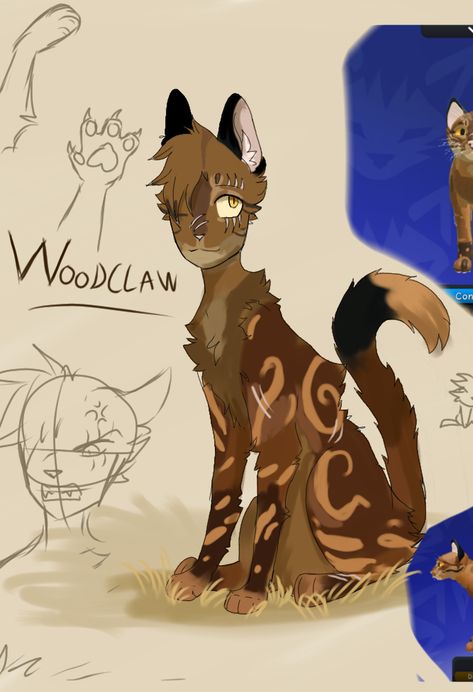
Advertisement
Before adopting a dog, it’s important to consider your lifestyle and how much time, effort, and space you can provide. For example, high-energy breeds like Border Collies or Labrador Retrievers may not be ideal for people living in apartments or those who cannot with Charles Spaniels or Shih Tzus may be better suited for apartment living or owners with a less active lifestyle. It requires careful planning, including considering factors such as exercise requirements, grooming needs, and the financial commitment of veterinary bills and pet supplies.
Advertisement
39.A Furry Friend for Life

Advertisement
They offer unconditional love, loyalty, and emotional support that are difficult to match in any other relationship. The decision to bring a dog into your life should not be taken lightly, as it requires time, effort, and resources. However, the rewards of dog ownership—joy, companionship, and love—are worth every bit of effort. Whether you are considering getting a dog or already have one, remember that the bond you share with your dog will likely be one of the most meaningful relationships of your life. The loyalty and affection they offer are priceless, and their presence in your life will undoubtedly make the world a little brighter, one wagging tail at a time.
Advertisement
40.A Unique Story of Animals’ Interactions and Roles in Nature

Advertisement
Animals have long fascinated humans, not only for their behavior but for their unique roles in ecosystems, cultural significance, and interactions with one another. Among the countless species in the animal kingdom, two of the most iconic — the cow and the lion — represent vastly different aspects of life. While cows are often associated with farming, sustenance, and gentleness, lions are viewed as symbols of strength, courage, and dominance in the wild. Despite their differences, the relationship between these animals, and the broader context of how different animals interact, paints a fascinating picture of the animal kingdom.
Advertisement
41.A Symbol of Peace, Sustenance, and Agriculture
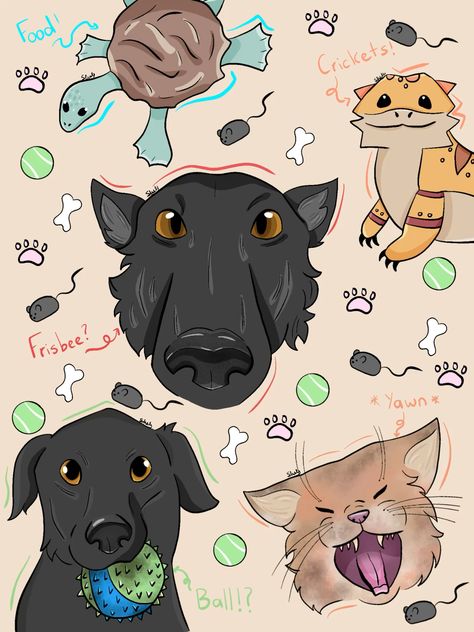
Advertisement
Domesticated for their milk, meat, and leather, they have also played a crucial role in agriculture by providing labor for plowing fields. Their slow pace and placid demeanor make them seem like the epitome of docility. In many rural areas across the world, cows are treated with great respect and care. In Hinduism, for example, the cow is considered sacred and is revered as a symbol of non-violence, motherhood, and the earth’s abundance.
Advertisement
42. Strong, Majestic, and Powerful

Advertisement
In stark contrast to the calm and peaceful cow, the lion represents power, dominance, and leadership. Known as the “king of the jungle,” lions embody bravery and strength. Lions are apex predators, meaning they sit at the top of their food chain and play a pivotal role in maintaining the balance of their ecosystems. Lions are social animals, often found in prides, where a hierarchy exists, and each lion plays a role in the pride’s survival. The lioness, for example, is typically the primary hunter, while the male lion guards the pride and asserts its dominance. Lions are known for their majestic manes, powerful roars, and intimidating presence, making them one of the most recognizable and respected animals in the world.
Advertisement
43.How Cows and Lions Differ in Their Roles in the Ecosystem

Advertisement
Despite their stark differences, both cows and lions play essential roles in the natural world. Cows, as herbivores, are a crucial part of the food chain. By consuming vast amounts of vegetation, they help maintain plant growth and control the spread of certain types of grasses and weeds. Their grazing habits also help shape the landscape, preventing overgrowth and ensuring biodiversity. The nutrients in their manure return to the soil, enriching the ecosystem and supporting plant life.
Advertisement
44.Predator and Prey Dynamics

Advertisement
While cows and lions live in different environments, interactions between these two species are not entirely out of the question. In the wild, lions and cows do not share the same habitat, as lions are typically found in save grasslands, and open woodlands, while cows are often found on farms, pastures, and grasslands where humans tend to their herds.
Advertisement
45.The Cultural Significance of Cows and Lions

Advertisement
In addition to their roles in the natural world, both cows and lions hold significant cultural and symbolic meaning across various societies. The cow, revered for its calm nature and its role in providing sustenance, is a symbol of fertility, abundance, and peace. In Hindu culture, the cow is seen as a sacred animal, a symbol of non-violence and reverence for life. The cow is also associated with motherhood and nourishment, as it provides milk to sustain human life.
Advertisement
